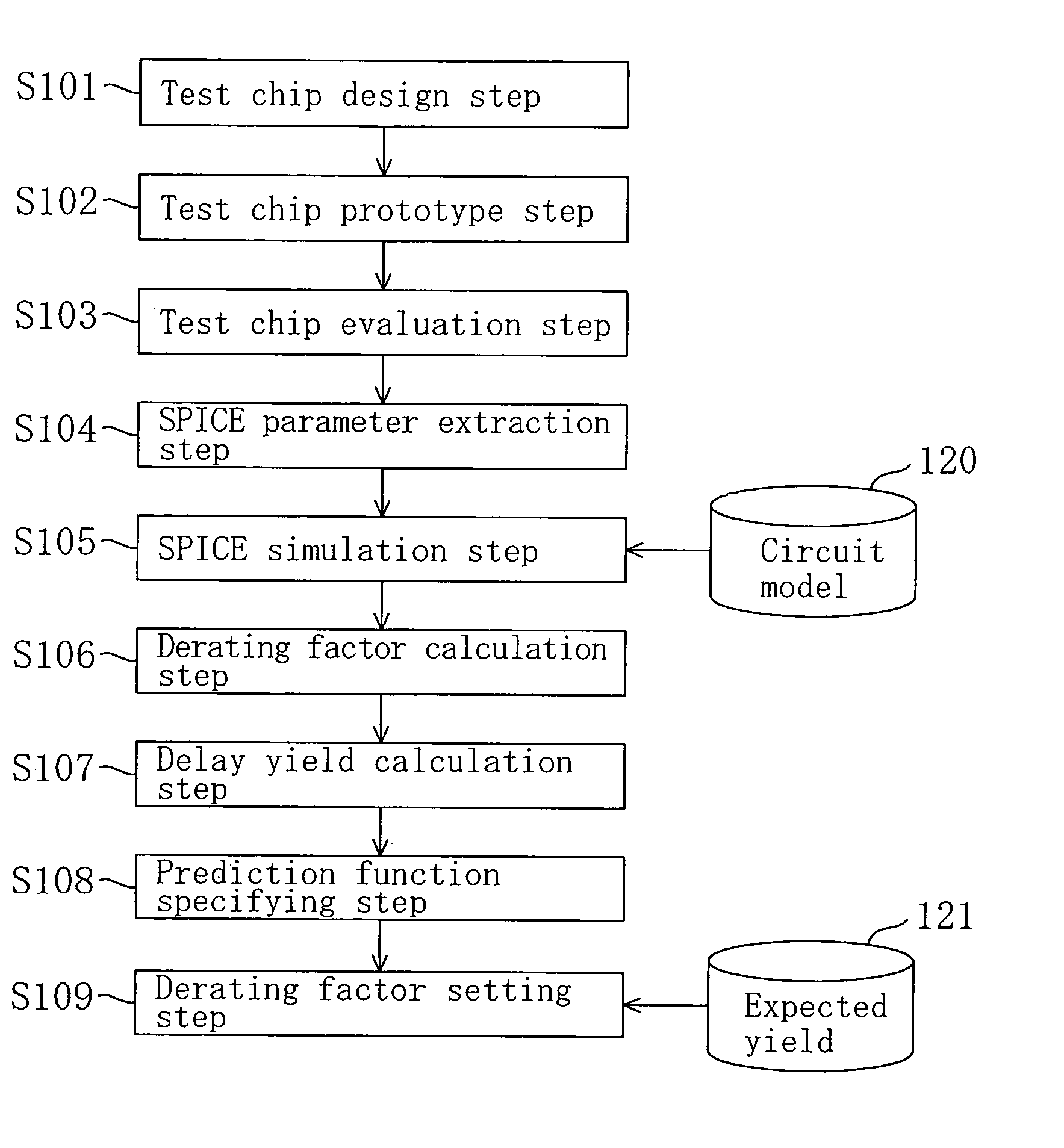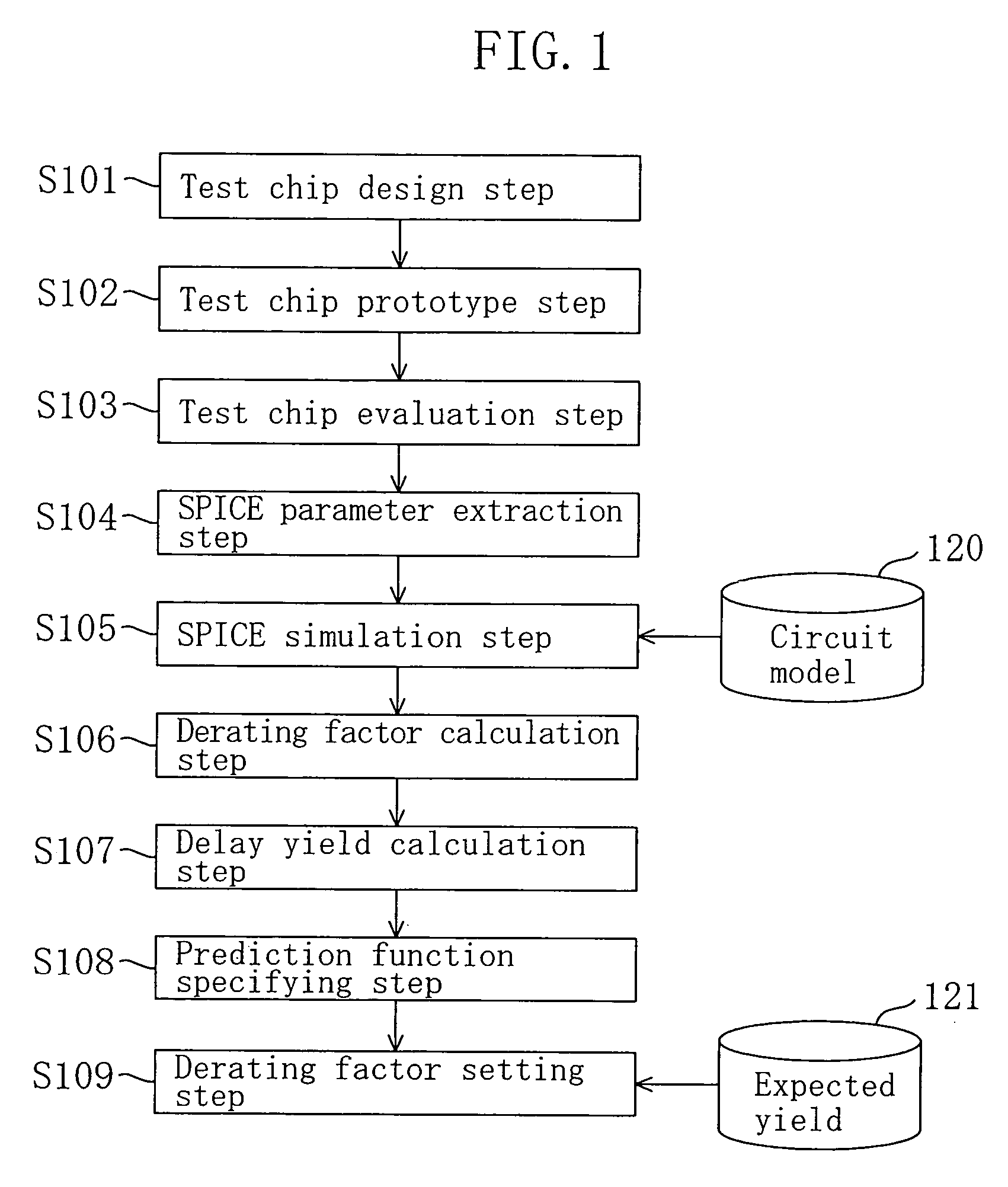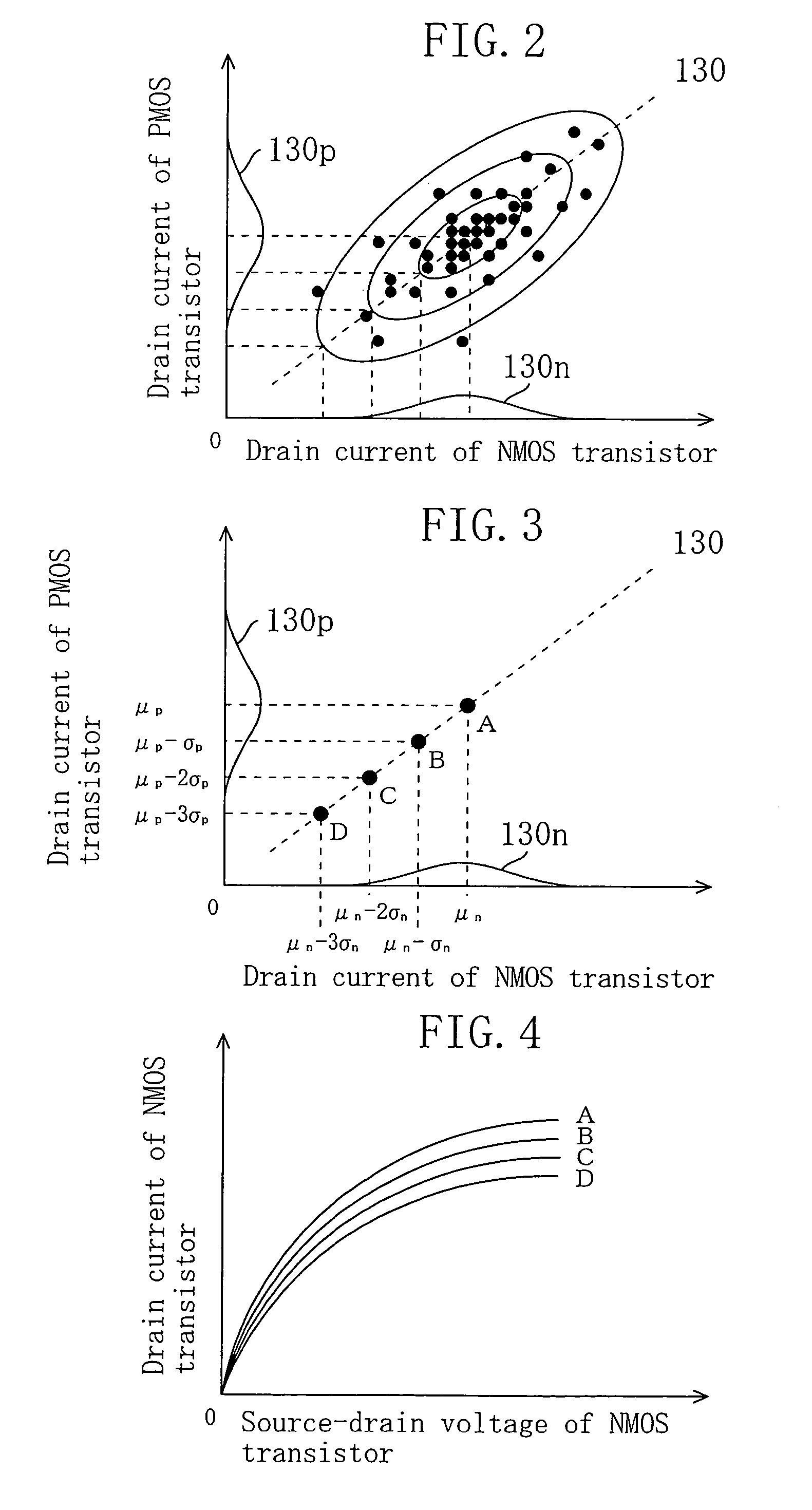Method for setting design margin for LSI
a design margin and design technology, applied in the field of setting design margins, can solve the problems of difficult to set an appropriate design margin against the fabrication variation, difficult to efficiently develop an optimum lsi, waste of circuit design on the contrary, etc., and achieve the effect of suppressing the setting of excessive or insufficient design margins and more realistic and accura
- Summary
- Abstract
- Description
- Claims
- Application Information
AI Technical Summary
Benefits of technology
Problems solved by technology
Method used
Image
Examples
embodiment 1
[0080]Now, a method for setting a design margin for an LSI according to Embodiment 1 of the invention will be described with reference to the accompanying drawings.
[0081]FIG. 1 is a diagram for showing procedures in the method for setting a design margin for an LSI of Embodiment 1. In the method of this embodiment, a design margin is set against fabrication variation with the fabrication variation of a CMOS transistor, that is, a kind of CMIS transistor, regarded as a delay varying factor.
[0082]As shown in FIG. 1, first in a test chip design step S101, a test chip mounting a variety of transistors to be included in an LSI to be fabricated is designed.
[0083]Next, in a test chip prototype step S102, a plurality of test chips designed in the test chip design step S101 are prototyped.
[0084]Then, in a test chip evaluation step S103, transistor characteristics, that is, for example, at least current-voltage characteristics, of NMOS transistors and PMOS transistors out of the various trans...
embodiment 2
[0119]Now, a method for setting a design margin for an LSI according to Embodiment 2 of the invention will be described with reference to the accompanying drawings.
[0120]As a characteristic of Embodiment 2, a design margin against the fabrication variation is set by taking not only the variation component of the transistor characteristic described in Embodiment 1 but also a variation component of the wiring characteristic of the LSI into consideration as the delay varying factor of the logic circuit included in the LSI.
[0121]Therefore, the characteristic part of this embodiment will be described particularly in detail.
[0122]FIG. 1 is a diagram for showing procedures in the method for setting a design margin for an LSI of Embodiment 2, in particular, in which the design margin against the fabrication variation is set by regarding, as the delay varying factor, the variation component of the characteristic of a CMOS transistor, that is, a kind of CMIS transistor and the variation compo...
embodiment 3
[0144]A method for setting a design margin for an LSI according to Embodiment 3 of the invention will now be described with reference to the accompanying drawings.
[0145]FIG. 13 is a diagram for showing procedures in the method for setting a design margin for an LSI according to Embodiment 3. In Embodiment 3 shown in FIG. 13, the same procedures as those shown in FIG. 1 of the method for setting a design margin for an LSI according to Embodiment 1 are referred to by using the same reference numerals.
[0146]As shown in FIG. 13, as a characteristic of this embodiment, the method of this embodiment includes, in addition to the procedures up to the setting of a design margin described in Embodiment 1, a product development / mass-production step S301 of developing and mass-producing a product on the basis of the set design margin and a delay yield verification step S302 of correcting the design margin on the basis of the LSI actually fabricated as a product.
[0147]Specifically, in the produc...
PUM
 Login to View More
Login to View More Abstract
Description
Claims
Application Information
 Login to View More
Login to View More - R&D
- Intellectual Property
- Life Sciences
- Materials
- Tech Scout
- Unparalleled Data Quality
- Higher Quality Content
- 60% Fewer Hallucinations
Browse by: Latest US Patents, China's latest patents, Technical Efficacy Thesaurus, Application Domain, Technology Topic, Popular Technical Reports.
© 2025 PatSnap. All rights reserved.Legal|Privacy policy|Modern Slavery Act Transparency Statement|Sitemap|About US| Contact US: help@patsnap.com



